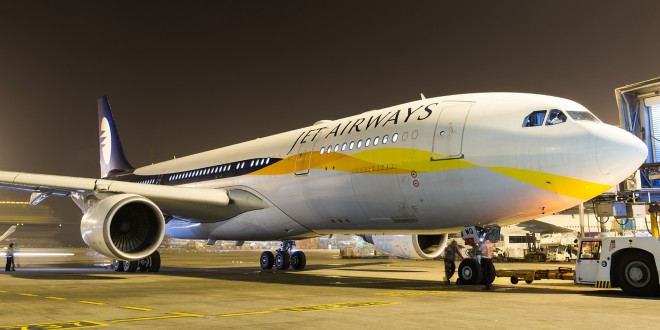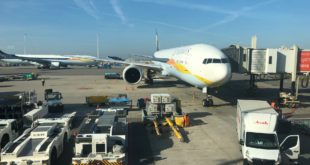Jet Airways recently reported results for the second quarter (July – Sept). Profit for the quarter was at 87.5 crores however, that does not give the complete picture. Analysed further the numbers bring up several trends.
Lower fuel prices have helped bring down costs significantly
Jet Airways CASK (cost per available seat kilometre) is in the range of Rs 4.14 – 4.20 which is driven by significantly lower fuel costs. Fuel accounted for approximately 28% of the total operating expenses. With the second quarter usually being the weakest of the fiscal year, a lower CASK was critical to match the depressed yields. Revenues came in at Rs 5,058 crores while costs amounted to Rs 4,903 crores.
High debt. Net profit due to gains on sale & leaseback
The numbers reveal that the Earnings before Interest Taxes and Lease Rentals, the Earnings before Interest and Taxes and the Earnings Before Taxes were all positive.
However, interest charges at Rs 215 crore are significant, and reflects a high debt burden. One has to question on the deployment of funds received for sale of assets and ownership share to Etihad Airways PJSC.
Were it not for the Rs 185 crore paper profit gained from the sale and leaseback of aircraft and engines, Jet would have reported a loss of 98 crores.
JetLite and delayed TDS payments a source of worry
The erstwhile Air Sahara, now called JetLite, with a fleet of just 10 aircraft lost a whopping 50 crores. On an operating level this would be 51% of losses and must be addressed immediately. Additionally, penalties on delayed TDS (tax deducted at source) payments, accounted for in other expenses, were mentioned. Given that TDS is a mandatory remittance of deductions already carried out, there is chatter in the aviation community.
Overall cost structure and profitability ratios:
Cost structure as a percentage of operating expenses are:
- Fuel 27%
- Staff expenses 12%
- Lease Rentals 11%
- Maintenance Expenses 13%
- Selling & Distribution 13%
Profitability (as a % of revenues) indicates that the EBITDAR margin was 17% and EBIT margin 3.1% – both of which are trending in the right direction.
 Bangalore Aviation News, Reviews, Analysis and opinions of Indian Aviation
Bangalore Aviation News, Reviews, Analysis and opinions of Indian Aviation




